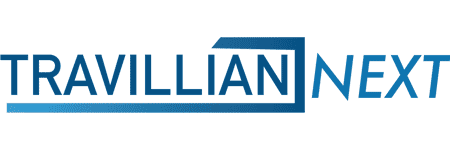Community banks were handed a seemingly insurmountable task in late March: design and implement processes to execute the US Treasury and SBA’s Paycheck Protection Program. Some banks lacked the requisite project management skills; others lacked the infrastructure. Yet the innovation, dedication, and leadership that successful institutions have exhibited remind us why we should appreciate our local banks. Vilified during the financial crisis, they are now heroes for their customers and communities when they need them most.
The following article gives an inside view of recent events at Investors Community Bank ($1.4 billion in assets, located in Manitowoc, WI) as they embarked on their PPP rollout. According to CEO Tim Schneider, the bank’s success is due the tireless efforts of its workforce, with employees from all departments taking on new responsibilities.
At the center of this effort was Cyrene Wilke, SVP of Operations and a 9-year veteran at ICB. Cyrene had previously led critical strategic operations processes, like bank acquisitions and full system implementations, but was faced with possibly her greatest challenge: In only a matter of days, she coordinated the institution’s integration of the PPP process. Cyrene was kind enough to chronicle a “day in the life” amid the Covid-19 crisis.
Motivated by more than the bottom line, bankers like Cyrene have “stepped up” and left indelible marks on the communities they serve.
This piece is dedicated to them.
Friday, April 10 – Cyrene Wilke
5:27 AM:
Upon awakening, the first thought that enters my head is…“Need coffee.” My brain has been running 24/7 lately, so my sleep wasn’t great. I’m low on half-and-half; I remind myself to ration it. After letting the dogs out, I scan ICB’s private employee Facebook page and post something lighthearted.
How did I get here? I reflect on the events of the past week. As we found out about the paycheck protection loans in the CARES Act, our Chief Credit Officer flew to Florida to deal with an urgent personal matter and couldn’t be part of the process of figuring out how to operationalize it. “Does anybody in the credit team have project management experience?” I asked. The answer was “no.” So, I said, “Well, I guess I’m going to be helping you folks with this because it has to get done.” I felt like a ton of bricks had landed on me.
6:10 AM:
I log in to the bank’s system and run metrics on the previous day’s business. Wow! The progress that we made yesterday with our PPP loan pipeline is impressive. I can see how hard our operations team members are pushing, and I want to make sure that they don’t burn out.
Our bankers, of course, have been working equally hard, burning the midnight oil since last Friday. One of them said, “I can’t sleep, so I get up at 2 AM, knowing that my email will be overloaded. I just start answering questions and taking calls when the sun comes up.”
I check my email. How do I already have 43 new e-mails since 10:30 PM last night? I prepare myself for our 9:00 AM daily PPP team call, and I cancel a subsequent 9:30 meeting with a project team responsible for launching new software, as we have no new updates from the vendor.
9:00 AM:
Our PPP loan project team video conference begins. What new guidance is available from the SBA, and what types of questions do we need to address with our frontline teams? We all leave with action items.
The SBA’s guidance has been challenging, to say the least. Some of the frequently asked questions are strangely worded. For example, the first FAQ is, “Do we have to guarantee that the dollar amount is right?” And the answer: “No, but you do have to do good faith verification.” Isn’t that the same thing? To make matters worse, the FAQs are constantly changing. Our Senior Vice President of Business Banking, Bill Hodgkiss says, “It’s like building an airplane while you’re flying.” Fortunately, Dave Coggins, our Chief Banking Officer, read everything that came through and passed it on to our bankers, letting them know exactly what was important. He’s been a great counterpart to me.
10:32 AM:
One of our credit analysts is having trouble getting the E-Tran (i.e., SBA portal) credentials to work. We try to determine what went awry. Is the account still suspended? Yes, and we’re still waiting on a response from systems support.
From the moment we went live, E-Tran had issues. Across the US, every ops team is trying to get on it. It’s like going to Disney World, and everyone is in line for a single ride. I remember the events of April 3rd. That night, we worked until 10:30 or 11 PM, as well as all day Saturday and Sunday, late into the night. We only had one person doing E-Tran entry, and she was working as late as possible because the system seemed to work better after hours. By Tuesday, we got additional users up and running. We started to get into a groove and build some momentum, but apparently the problems are not behind us.
11:00 AM:
I check in with my boss. He asks me how the team and I are doing. I report that some of our people are getting overwhelmed and tired, taking only momentary breaks before pressing on. Considering the pressure under which we’re all working, the team is holding up well. We take comfort in humor, and our spirits are lifted by the thanks and encouragement we receive from our customers, especially the farms and small businesses.
One of these thankful customers is Terry Fote, owner of four local Dairy Queens with a total of 110 employees. She holds the distinction of receiving Investors’ very first SBA loan to open her original store back in 1999. Our CEO Tim Schneider was her lender. Seasonal businesses rely on peak months to carry them through the year, and March kicked off Terry’s busy season. Her optimism quickly turned to fear as business restrictions and then shutdowns began on March 17th. The scramble began. Over the next weeks, she was faced with a series of setbacks. At one location, all but two of Terry’s staff quit over virus fears. As she rushed to secure enough masks for her employees, the police constantly monitored her stores. Ever-changing government and CDC guidelines—and, of course, concerns around her business’s financial viability—heightened her anxiety. Terry increased wages by $2/hour and instituted hazard pay to stabilize her workforce. Dave Diedrich, one of our senior business banking officers, helped her submit her PPP application on April 3rd, the first day the program went live. We worked straight through the weekend, reviewing all 121 pages of her submitted financials, and we got her loan approved immediately. It was funded on Thursday, April 9th. Phew!
11:34 AM:
To reforecast the budget, I finalize the data, accounting for significant increases in overtime and delayed projects. The number of people who have been working 15-20 hour days is incredible.
12:00 PM:
It’s time for a quick bite to eat and a deep breath. I’m sure that I’ve gained at least 5 pounds in the past month! I remind myself to take time for a walk… tomorrow, of course. I say “hi” to my husband; I haven’t seen him all day. We agree to meet again for dinner.
12:27 PM:
I answer emails and instant messages. A credit analyst sends me an SOS: He needs help fixing a database entry. No problem; it’s taken care of.
In the news: COVID cases are mounting locally. Farms are dumping milk, and face masks are now recommended. I’m thankful that ICB made an early decision to move to a virtual workforce. Our employees are safe at home.
1:07 PM:
I speak with Jennifer Hoerter, a Sr. Operations Support Specialist, who built our DocuSign form over a tense 24-hour period early in the process. She gave me an update on a screen share she did for a business client who was having trouble. She couldn’t tell the customer that it was user error, as “the customer is always right.”
1:30 PM:
It’s time for a web call with fellow community bank operations leaders across the country. We’re members of an advisory council. What is everyone doing? How can we help each other? Many of these folks wish they would’ve adopted digital signatures and online account opening sooner. I breathe a sigh of relief, thankful that we already have the tools needed to adapt to our new remote business model.
2:33 PM:
I get a call from one of the bankers on the council who is not a big SBA lender. He needs help. How does he notify the SBA that he has funded a PPP loan? I walk him through the process and offer to arrange a call with his ops team over the weekend, if needed. I’m so glad that we’ve gotten out in front of PPP, building a process that gives us a level of comfort with the risk we’re taking while allowing us to do the right thing for our communities.
3:30 PM:
I check in with my bank operations leadership team. Electronic banking is doing well, with everyone settling into new remote work arrangements. Deposit operations is preparing for the CARES Act changes to IRA minimum-distribution requirements and is bracing for a high volume of fee-waiver requests. Loan ops has tapped resources in other departments to assist them with the increased volume of payment-deferral requests and PPP loan closings. We run a quick report on our DocuSign envelope usage and immediately call the vendor to add another 3,000. Incredibly, we’ve blown through over 500 in the last two weeks.
We joke around that the we “flattened the curve” a bit. We had the initial tsunami of panic shoppers, and we’ve still been processing an average of 50 E-Tran approvals every day. In fact, we’re getting many new applications each day, but people can finally breathe. However, our new bottleneck is in documentation. We had close to 130 loans this morning that were being documented today. Once they pound those out, we’ll be in decent shape.
4:00 PM:
Our daily executive committee meeting begins with updates from the team. Today, PPP apps were made available to independent contractors. Is there any specific guidance on that yet? No. Is there any word on whether we can lend to Directors yet? No. Is an SBA Authorization going to be released? Who knows? Amid all of these unanswered questions, we’re trying to help desperate businesses to get last-minute loans.
As I leave the meeting, I hear that Kristy Stiefivater, a Business Banking Officer in Green Bay, got a late application from a panicked healthcare-focused sole proprietor who was so absorbed in helping others that she forgot to help her own business. She banks elsewhere and her PPP application was in limbo, so a friend asked Kristy to help her. We were concerned about funds running out, but Kristy was able to get all of the necessary information, and we got a quick approval. She will get funded.
4:30 PM:
We walk through the process flow with our Chief Banking Officer, so he understands how our new software will function. We are still hoping to launch it next week, if PPP funds don’t run out first.
5:00 PM:
I check in with our loan ops manager. How can we recognize those who have gone above and beyond, working 15 hours or more per day through the weekends? We discuss some ideas. I send several “thank you” instant messages to those who are still working online after 5 PM.
Last weekend was incredibly hectic for many of us, myself included. I’m hoping to get some down time this weekend, particularly considering that it’s Easter holiday weekend and things will hopefully quiet down a bit.
7:28 PM:
I receive an email from a vendor project manager assigned to our software launch. Email addresses included in the setup need to be corrected as soon as possible, or we face delay. I text our IT Manager for help and resubmit the workbook to keep the project moving forward.
I check the days E-Tran metrics and loan pipeline, things are still looking good, with over 50% of our approved loans closed and funded. So far over 4,000 people in our communities will continue to receive paychecks as a result of the loans we’ve processed in five days.
My work is finally done. Today was light, compared to the 15-hour days we were pulling late last week. You know, though we have been working from home, we’ve never worked harder.
Per SBA data, Wisconsin was the 10th largest approver of PPP loans, funding $7.3 billion during the 10-day eligibility period. As of Wednesday, April 22, Investors Community Bank protected 12,640 paychecks and funded 670 applications for $95.4 million since the program went live on April 3. The bank’s largest loan was roughly $5 million, made to a company with 300 people. Their smallest was roughly $8K.
On Thursday, April 23, 2020, the United States House of Representatives passed the Senate-approved $484 billion bill adding additional funding for COVID-19 recovery and relief. $310 billion is specifically allocated for the SBA to add funds to the Paycheck Protection Program, and $60 billion is reserved for loans made by community banks, credit unions, and other smaller lenders.
Travillian’s Banking and FinTech Practice provides Search and Talent Advisory services to depository institutions across the country. Established in 1998, the firm has built a unique platform that touches every corner of the industry. To learn more, click here, or get in touch below!
|
Brian Love, Head of Banking & Fintech
(484) 680-6950 | blove@travilliangroup.com |






